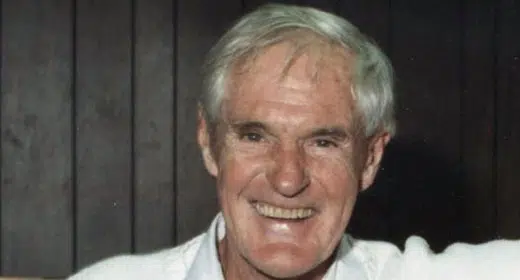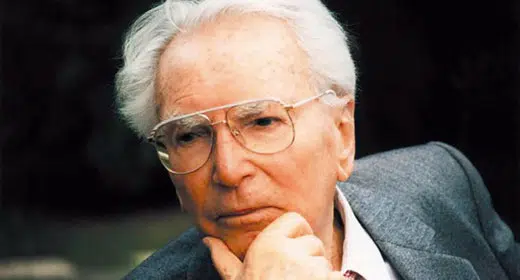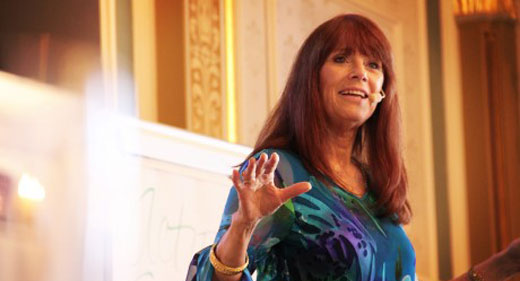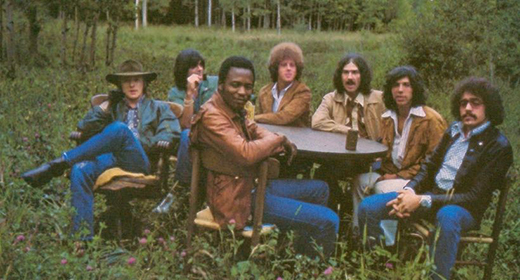by Karen Maezen Miller: Like the student in this famous koan, we constantly face the challenge of emotional turmoil and restless mind…

You don’t have to cut off your arm like he did, says Karen Maezen Miller, but you do have to cut off your conflicting emotions at their root.
“Would you like to learn to meditate now?” I asked this of a student as we neared the end of the meditation class. I was losing my patience. All morning long, she had raised philosophical questions and objections. She wanted to debate Buddhism and not practice it. Time was running out, and we’d barely begun.
I kept trying to get back to the point, but it wasn’t working. She had her own ideas and they were different. When we began to meditate together as a group, she ignored the advice. When I demonstrated the postures for sitting comfortably on a zafu, a bench, or a chair, she wouldn’t try them. Sitting cross-legged on a cushion, back bent, her knees floating several inches above the floor, it was a good bet she was in agony.
Perhaps she was disappointed, angry, or bored. When we met, she said she had taken several meditation and mindfulness courses already, naming the famous teachers and thinkers she admired. I wondered what she was still looking for.
“Can I ask one more thing?” It would be her last question of the day. “Have you found the secret to happiness?”
“No,” I replied. “But I’ve found the secret to suffering.”
Bodhidharma sat facing the wall. The Second Ancestor stood outside in the snow. He cut off his arm and said, “My mind is not yet at peace. Please, Master, put my mind to rest.”
Bodhidharma said, “Bring me your mind, and I will put it to rest.”
The Second Ancestor said, “I have searched for my mind, but I cannot find it.”
Bodhidharma said, “There, I have put your mind to rest.”
This is a koan that Zen students might encounter several times over the course of their formal training. But even if you’re not a Zen student, it’s a koan that you encounter many times throughout your life. It could be when you are depressed or enraged. When you are anxious, afraid, helplessly confused, or in despair. The kitchen sink is stopped up and the car has a flat. The roof is leaking. The taxes are due. You can’t take it anymore, and you want out. Can someone tell you the secret to happiness?
Koans are stories of historical encounters between Zen teachers and students, and this one recounts a student’s climactic meeting with Bodhidharma, the meditation master who brought the Buddha’s teaching from India to northern China in the form of Chan, the predecessor to Japanese Zen.
The details of his life are a little sketchy. Some say Bodhidharma came by water, some say by ground, sometime around the fifth century. His ocean passage was tossed by storms, his overland journey besieged by bandits. Like anyone traveling the perilous byways of life, his was not an easy route. He got sick; he got sore. There were setbacks and deprivations. Eventually he arrived at a place he could settle. He founded a sanctuary, sat down, made his mind as steady as a mountain wall—originating the practice called wall gazing—and entered the state of samadhi, non-distracted awareness. This story presents the essence of Bodhidharma’s Zen, which he described as this:
A special transmission outside the scriptures;
No dependence upon words and letters;
Direct pointing to the mind:
Seeing into one’s own nature and attaining buddhahood.
Bodhidharma waited a long time for a student to show up—by some accounts, nine solitary years spent facing the wall. Maybe even longer. At any rate, he sat there for more time than you can fathom. Now, someone approaches.
Alone in his misery, fraught with pain, a stranger emerges from a blinding blizzard to confront the old master. This fellow is serious, and from the looks of it, half out of his mind. We know a little bit of the backstory. He’s not exactly a newbie. He’s read the ancient texts, pored over books and magazines, and taken the courses. He knows a lot already, and yet there is still something missing. His mind is not at ease.
Hearing that there is a new teacher in town, he goes to see him. In fact, he goes to see him nearly every day—and every day, the teacher turns him away. He can’t seem to get past the front door! His panic grows. In desperation, he starts to cut himself to shreds, as if that would prove him worthy.
Zen teachings aren’t always as cozy as you might expect. They point directly to the savagery of human suffering.
Curiously, the student in this story isn’t named, although we know him well. Who is this so-called Second Ancestor, the heir to Bodhidharma’s wisdom, the earnest seeker of peace and ease?
To pass this koan, you have to find out who this character is. If you go up into your head looking for an answer, separating yourself from your present reality, you won’t see it. If you are lost in rumination or intellectual analysis, you are a million miles away. Fifteen centuries after Bodhidharma mouthed his words, whose mind is bringing this story to life right now? Who is seeing it, reading it, and living it?
It can’t be anyone but you. You are the only one here. You are the student, come to calm your weary mind. Now we’re getting to the point.
Become one with the koan.
When you work with a koan master, you’re likely to get the same instruction whenever you ask for help: Become one with the koan. At first, this can sound as bewildering as when a yoga instructor tells you to breathe through your coccyx. You can’t quite wrap your head around it.
Become one with the koan? You mean cut off my arm?
Cut off what you’re holding on to: the attachment to your thoughts, beliefs, and feelings, the residue of your discriminating, egocentric consciousness. As Yasutani Roshi said, “Most people place a high value on abstract thought, but Buddhism has clearly demonstrated that discriminative thinking lies at the root of delusion.”
Thoughts—and feelings triggered by thoughts—are mutable and impermanent, and yet because we humans incorrectly identify our being with our thinking, we construct a false notion of ourselves out of ideas and memories that have no actual substance. No wonder the ego is called “the false self.” The false self—the thinking mind—is continuously talking to itself, disturbing itself, even lying to itself. Reimagining the past or fantasizing about the future. Setting up expectations that aren’t met, then casting judgment and blame. Struggling every step of the way to stop struggling. Naturally, it doesn’t work.
This realization is a critical departure from the methods of modern psychology or self-help. Buddhism in general, and Zen in particular, is not concerned with the content of thoughts or feelings, except to recognize that they are the cause of confusion, emotional paralysis, and pain. In and of themselves, thoughts are no big deal, except when we make a big deal out of them, creating a dualistic separation from reality, which is a wordy way to say “a problem.”
“Emotionally we have many problems, but these problems are not actual problems; they are something created; they are problems pointed out by our self-centered ideas or views,” Suzuki Roshi said.
Easy for a Zen master to say, but hard to believe until you see it for yourself. Such is the kindness of Bodhidharma in this koan. Out of boundless compassion, he doesn’t give you what you ask for, but he tells you how to find it yourself. Until you free yourself, you won’t realize that there is no self to free. You are imprisoned by nothing and no one but your own thoughts, which self-liberate the moment you stop thinking about them.
Don’t think about your thoughts.
The teacher isn’t dismissive, however. He acts with merciful urgency. That thing that is disturbing you? Bring it to me. Your pain, your panic? Show it to me. And the person or things that you think caused the problem—your parents, kids, partner, neighbor, boss, critics, rivals, bad luck, hard karma, the driver who cut you off, the dog that ate your homework—bring that too. Time is running out. Let’s end your suffering right here now.
This is the aha moment. The student has been wracking her brain for years, debasing and nearly destroying herself, but in this instant, she is rendered empty. She can’t bring anything out. There is nothing she can grab ahold of. Life’s events are fleeting memories. Thoughts float up and disappear. Feelings overtake and then dissipate.
The mind involved in fantasies, dreams, desires, and attachments—you can’t find it. You can’t locate yesterday; you can’t even go back to the moment you started reading this sentence. If you’re holding on to the story of your life, you’re holding on to nothing. This moment right now is the only thing there is, and you are not apart from it. You are it.
All that rumination has gotten you nowhere, because there is nowhere else you can be. Perhaps you could just settle here and let things change by themselves—which they will, whether you like it or not.
It can be painful to admit that we create most of our own suffering, but even more painful to deny it. Buddha said there are 84,000 dharma gates, infinite pathways to liberation. Today alone there are 84,000 fresh, new moments to be free.









































